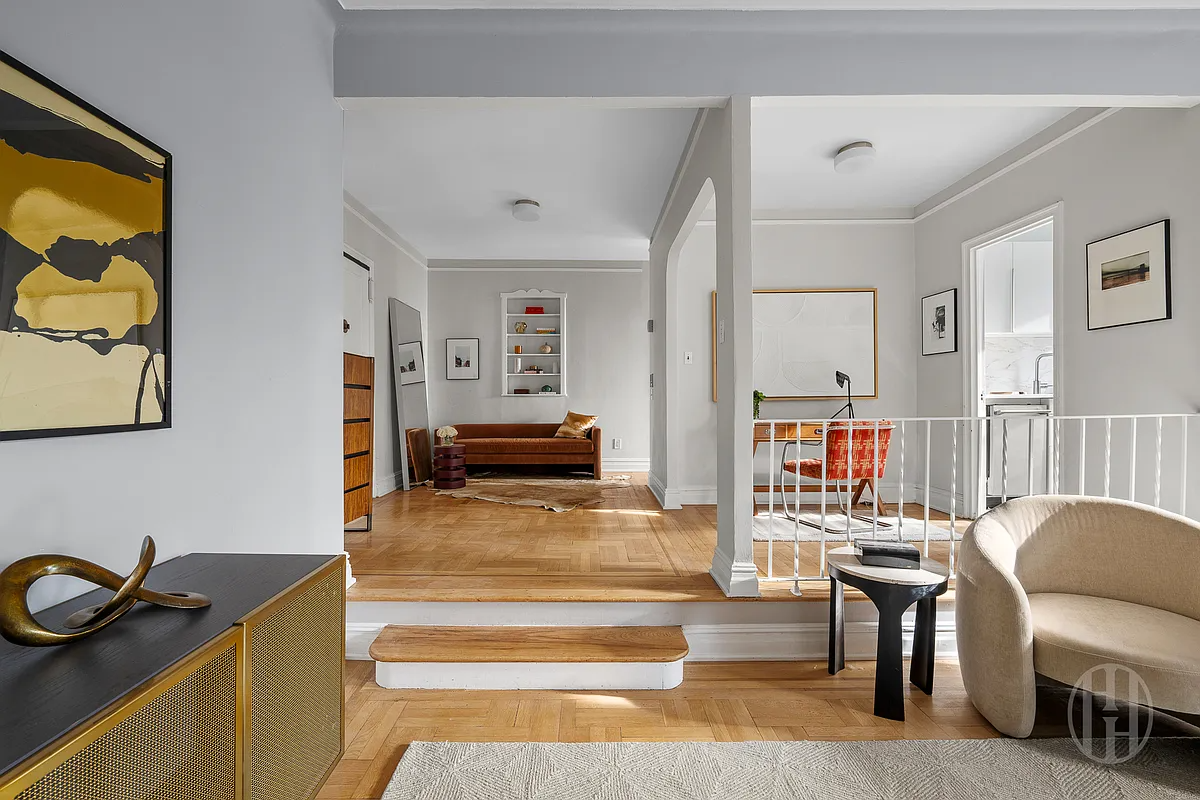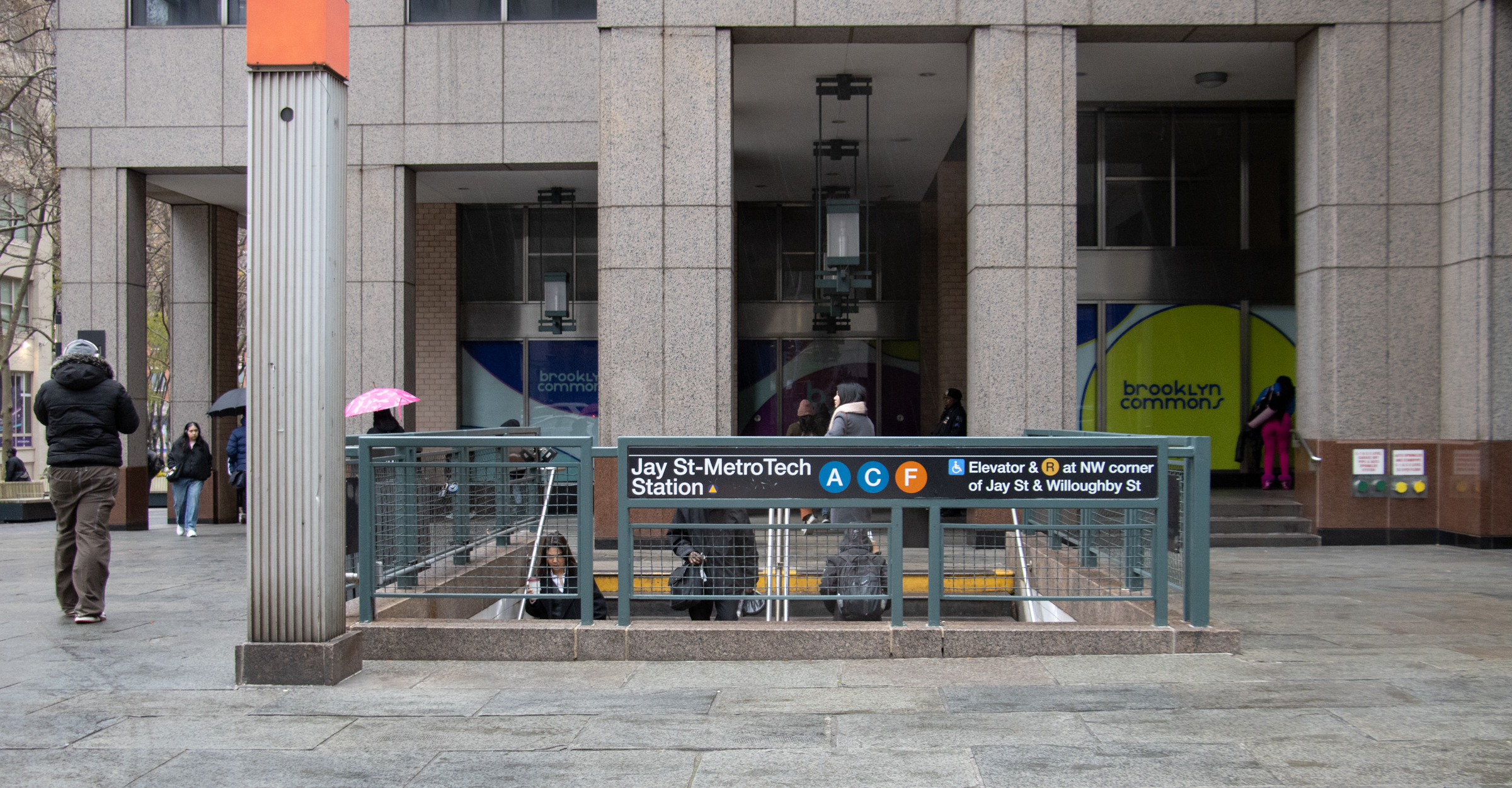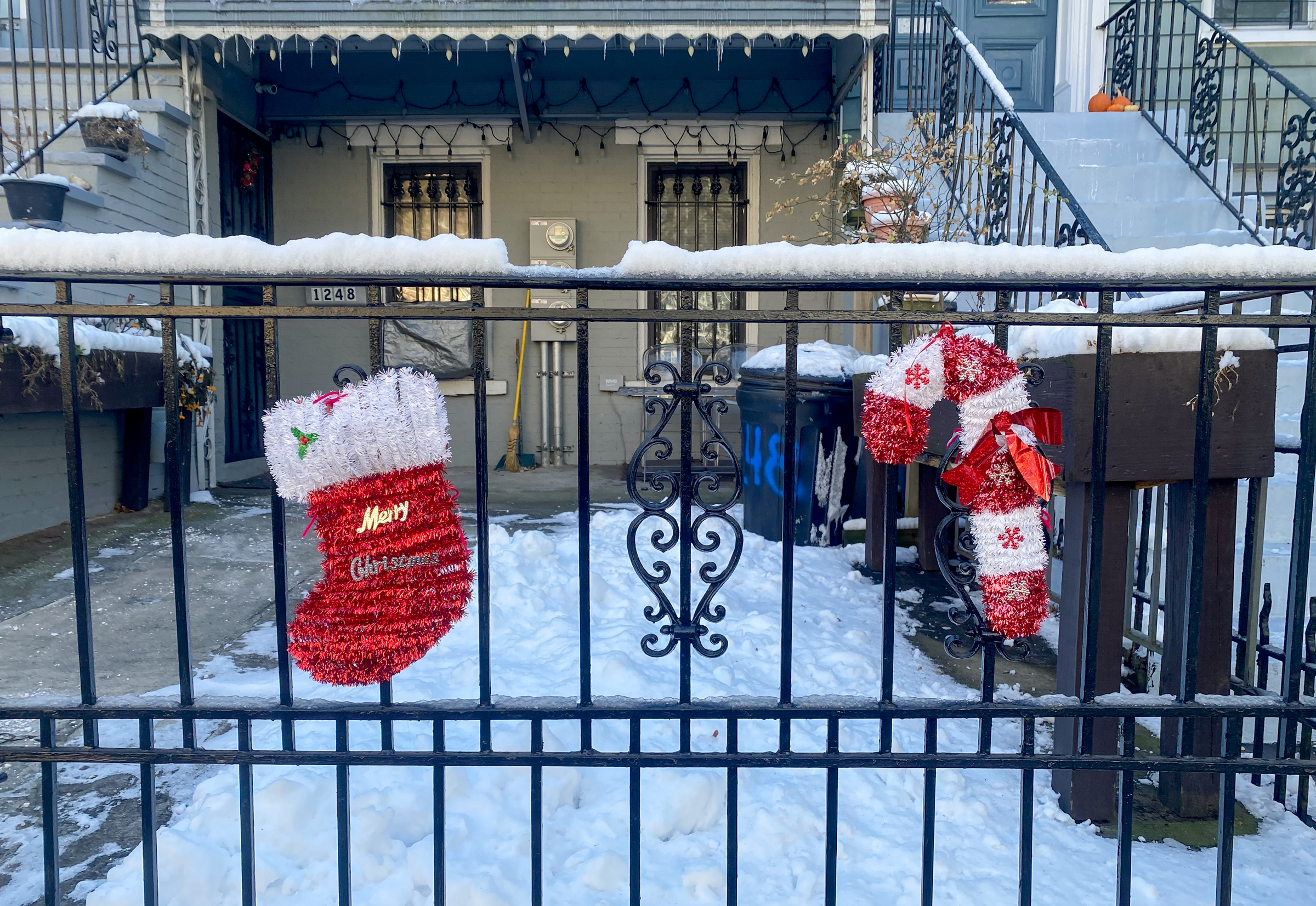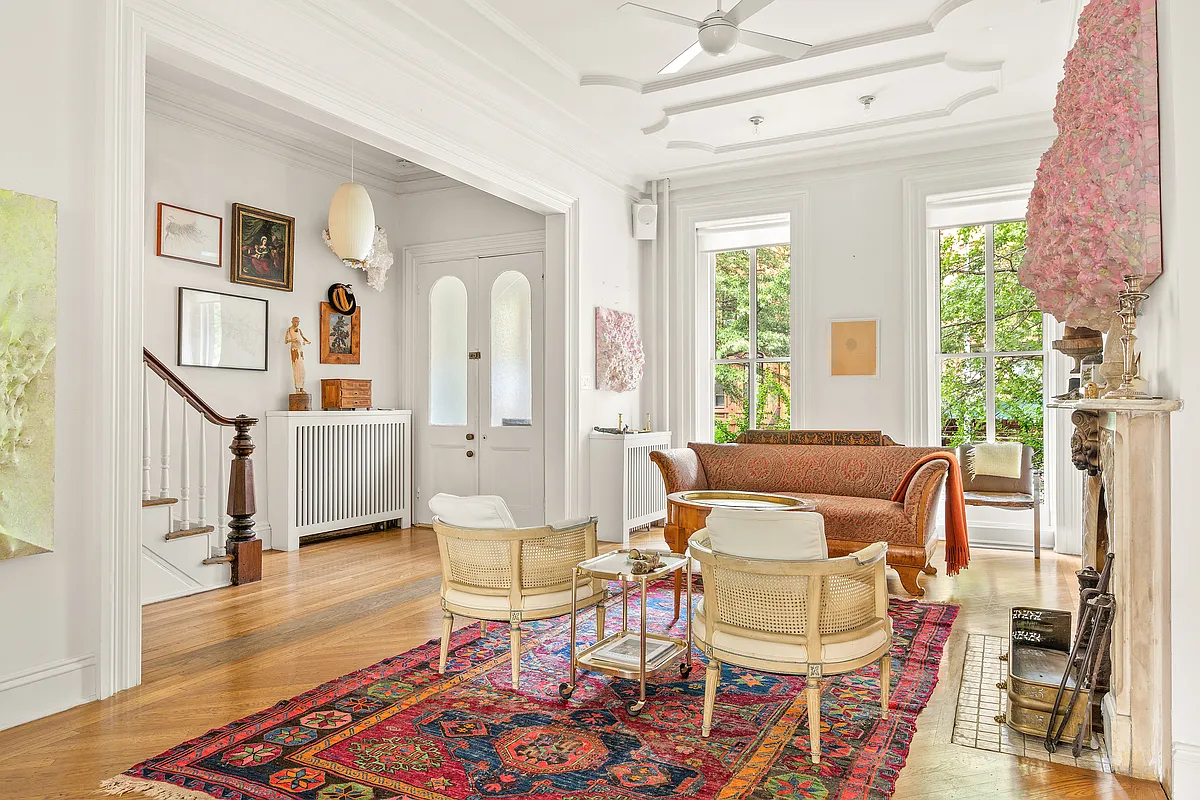Walkabout: Saving Bedford Stuyvesant, Part 2
Read Part 1, Part 3 and Part 4 of this story. The word ghetto was originally of Italian origin, referring to the segregated Jewish area of medieval Venice. During the Holocaust, the word came to mean the rundown, walled-in sections of cities like Warsaw and Lodz, where the Jews were confined and controlled, before they…


Read Part 1, Part 3 and Part 4 of this story.
The word ghetto was originally of Italian origin, referring to the segregated Jewish area of medieval Venice. During the Holocaust, the word came to mean the rundown, walled-in sections of cities like Warsaw and Lodz, where the Jews were confined and controlled, before they were taken away to concentration camps.
Today, the word ghetto means any urban area where poor minorities are concentrated, areas with high crime rates, poverty and substandard living conditions. These definitions are all important, because up until recently, the word ghetto was synonymous with Bedford Stuyvesant.
In researching this story, I was amazed how often the entire neighborhood of Bedford Stuyvesant was referred to by newspapers and journals as the largest ghetto in America. And that was by people who were sympathetic to Bed Stuy’s problems.
Even more famous (or infamous) for its ghetto-ness than Harlem, the most famous black community in America, Bedford Stuyvesant, in the eyes of the media, and the establishment, was the ghetto’s ghetto.
After the Great Depression, the city had basically let Bedford Stuyvesant go. World War II brought thousands into the community to work at the Navy Yard and other wartime industries, but when the war was over, and these plants shut down, there was nothing to replace them.
Even the most conservative of studies agree that the city provided no public services to the area, offered no help in employment opportunities, and barely addressed the problems of crime or poverty. Brooklyn in the 1950s and ’60s was highly segregated, with blacks and other minorities unable to move into many neighborhoods.

Fair housing statutes on the books were not enforced, and real estate brokers refused to show blacks homes in certain areas, steering them to central Brooklyn. Bed Stuy was one of the few neighborhoods that African Americans could buy in, redlined and all. The ghettoization of the neighborhood was almost complete: isolation by segregation, cessation of basic services, rampant unemployment, and people trapped by poverty, crime and the inability to rise out of it.
One hot day in July of 1964, an Irish-American police lieutenant shot and killed a 15-year-old black teenager in Harlem, after an incident with a knife. This death set off riots that spread through Harlem, and directly to Bedford Stuyvesant, where rioters looted stores and destroyed property. Hundreds were arrested, and order restored, but the neighborhood had reached the crisis point.
When Robert Kennedy was elected New York’s Senator in 1964, he was presented with this urban crisis, and he knew that something must be done. Throwing money at the problem would not solve anything. A new approach was needed.
His 1966 tour of Bedford Stuyvesant was an eye opener. Bed Stuy was not Harlem. Fifteen percent of its people were homeowners, compared to 2 percent In Harlem.
In America’s largest ghetto there were institutions, like churches and Masonic lodges, that provided stability and support for many in the community, and strong block associations of committed homeowners who had sacrificed much to buy their homes, some practically living in SROs in order to pay the mortgage.
Yet, there were also block after block of burned out buildings, brownstones and tenements in horrific shape with tenants, failing schools, unemployment, people with few skills, and zero federal aid had been spent in the neighborhood. Bed Stuy, which covers a large area of central Brooklyn, had been subdivided into five different gerrymandered congressional districts, none of which had African-American representatives.
It took a lawsuit filed under the Voting Rights Act, in 1965, to force the creation of the 12th Congressional District, resulting in Shirley Chisholm being elected as America’s first black United States Congresswoman.
Kennedy was shown all of this by neighborhood activists, led by State Supreme Court Judge Thomas R. Jones and Ms. Elsie Richardson, a leader of the Central Brooklyn Coordinating Council, which had arranged the tour. Both of them voiced the concerns of the community.
“I am weary of study,” Senator, Judge Jones was quoted as saying. “Weary of speeches, weary of promises that aren’t kept. The Negro people are angry, Senator, and, judge that I am, I’m angry too. No one is helping us. Ms Richardson also expressed concern, asking Kennedy to go beyond what previous visiting officials had done.”
Other activists told Kennedy, “You’re another white guy that’s out here for the day. You’ll be gone and you’ll never be seen again, and that’s that. We’ve had enough of that.”
Kennedy left the meeting feeling overwhelmed and a bit besieged and blamed for situations he did not create, but also left determined to do something. The same old, same old would not work again. What was needed in Bedford Stuyvesant was so great, and so multifaceted, that an entirely new kind of program was needed, one that involved not just federal funds, but also community participation and opportunities, and financial help and practical ideas from the private sector.
He went to the major foundations and enlisted their help. McGeorge Bundy of the Ford Foundation, Vincent Astor at the Astor Foundation, and the Taconic Fund, which had helped him when he was attorney general, by aiding in southern voter registration. Kennedy went to private industry’s big dogs; Thomas Watson at IBM, William Paley at CBS, and leaders of Welch’s Grape Juice, Equitable Life Insurance, National City Bank, and Lazard Frares.
He recruited Republican businessmen and leaders, including John Lindsay, Kenneth Keating and Benno Schmidt, as well as his senatorial partner, Jacob Javits. Kennedy and Javits worked to secure an amendment to the Economic Opportunity Act of 1964, which allowed for federal funding of community development projects in urban poverty areas, a provision that became law in 1966.
Ten months after his tour of Bed Stuy, Robert Kennedy, along with Mayor Lindsay and Senator Javits, met with a thousand or so people in a Bed Stuy school. There he announced the creation of the Bedford Stuyvesant Development and Service Corporation.
The two separate corporations within this organization would consist of one community corporation to decide what was needed, and another business corporation of business leaders and managers who would bring in the money and the expertise needed for success. The program for the development of Bedford Stuyvesant will combine the best of community action with the best of the private enterprise system, said Kennedy at the meeting. Neither by itself is enough, but in their combination lies our hope for the future.
Franklin Thomas, a black lawyer, was the first head of the community group, called the Bedford Stuyvesant Restoration Corporation (BSRC). His counterpart in the Development and Services Corporation (R&S) was John Doer, formerly of the U.S. Justice Department. In 1967, the BSRC bought an entire square block of buildings on the south side of Fulton Street, between New York and Brooklyn Avenues.

On that block were industrial and retail buildings, including the Sheffield Bottling Plant, once the largest employer in the area, abandoned since it closed in the early 1960’s. The plant became the main building in Restoration Plaza, housing the BSRC offices, as well as a community center and auditorium.
The entire square block of buildings was transformed by the architectural firm of Arthur Cotton and Associates, creating a ring of buildings with public space in the center, with a skating rink, and multi-level gathering spaces.
Over the next seven years, many changes would take place to this complex. The front facade of a brownstone factory was saved, and incorporated into the new buildings, and the bottling plant became home to the Billy Holiday Theater, a fully equipped stage theater, a top floor art gallery and event space, and rooms for community board meetings, as well as office space and a branch of a local college.
Because the needs of a poorer community often involve paying utility bills in person, with cash or money orders, Restoration also had branch offices of New York Telephone, Con Edison and Brooklyn Union Gas. Citibank, Manufacturers Hanover and Chase Bank all followed, opening on the Fulton Street side of the complex. Ironically, all of these banks participated in the redlining of the area.
A day care center opened, as did a Caribbean radio station. Other retail stores moved in, as well as governmental offices, such as Social Security. And perhaps, most importantly to the community, a large Pathmark supermarket opened in Restoration Plaza, the first new supermarket to open in Bedford Stuyvesant in over 30 years. By 1975, Restoration Plaza stood as the hallmark of the success of the Bedford Stuyvesant Restoration Center.
But Restoration Plaza itself was not the only program initiated by the Special Impact Program. Housing, employment, quality of life issues, and the building of a better, safer, and more economically viable community were the lofty goals of the BSRC and their business partners. How many of these goals were actually met, and how many fell over the cliff? Read on to Part 3 for what came next.
Related Stories
Suzanne Spellen, aka Montrose Morris, Is Writing Brownstoner’s First Book
Saving Bedford Stuyvesant, Part 1
Saving Bedford Stuyvesant, Part 3
Email tips@brownstoner.com with further comments, questions or tips. Follow Brownstoner on Twitter and Instagram, and like us on Facebook.
[sc:mailchimp-books ]




quote:
Projects no longer serve the people is what intended to serve. Now they are simply used to contain criminals in one area. That is no secret.
that hasnt been true since like the early 90s. try getting a projects apartment these days (in NYC anyway) with a criminal record… you can’t. and that’s a good thing. yes, in the 70s and 80s it didnt matter if you had a criminal record or had no intentions to work and make a better life for yourself.
NYCHA is one of the most successful housing projects (maybe the most) in the country.
im glad we arent tearing them down like other cities are doing but instead working from within and making them better thru attrition.
oh and, not meaning to sully a great thread.. randi go *f* yourself.
*rob*
Thank you for this series. I have a question: Earlier you said Bed Stuy was racially mixed in the 50s, and the 1978 Nooney photographs seem to support that. But here you are saying it was totally African America in the 1950s and 60s?
Incidentally, I am very curious if you know anything about Evelyn F. Veres. There is a 1978 Nooney photograph of her, in which she appears to be an elderly lady living in what appears to be her childhood home. That house, partially detached and with a mansard roof and a porch, is down the street from us and is presently empty and in absolutely appalling condition. It looks like it will have to be destroyed. There is some kind of haunting, untold sad story there….probably the usual one that she was unable to keep up the house, and subsequent owners were too.
great article
quote:
Today, the word “ghetto†means any urban area where poor minorities are concentrated, areas with high crime rates, poverty and substandard living conditions.
what about gay ghettos? that term has been around for a long time as well.
*rob*
Montrose, I think this was your best column yet! Extremely informative and a pleasure to read.
MM – Thank you for another insightful, informative and well written post. You ROCK!!!
Sad note: Franklin Thomas, first president of “Restoration” later went to Fannie Mae where he has since left disgraced. He was the recipient of mucho dinero and ignored the bundling of underwater mortgages which Fannie (and Freddie) took from unscrupulous banks and mortgage companies. Underwriting criteria and sound lending practices vanished and the American taxpayer now owns it all.
On a good note many employees were encouraged to go out and create business’ after getting needed experience at “Restoration.” I recall working with Tom Keller who went into construction and David Danois an architect who has a very successful practice today. I worked with them on renovation of a number of buildings in the Atlantic Urban Renewal Project in the early 70’s.
MG
The series is turning into a real cliffhanger. I was hoping to find out how the story ends in this episode… And you leave us with proverbial “To Be Continued”.
In this age of On Demand, having to wait until next week will seem like forever.
Great article MM! the people who think that the article is not a good representation of the facts and realities of bed stuy’s recent past MIGHT have a point. In light of that I hope they take the care and time to write a counter article that express their views and facts so that we all can benefit from the exchange of different ideas!
Frank McCourt’s students used to tell him all the time he should write a book, too.